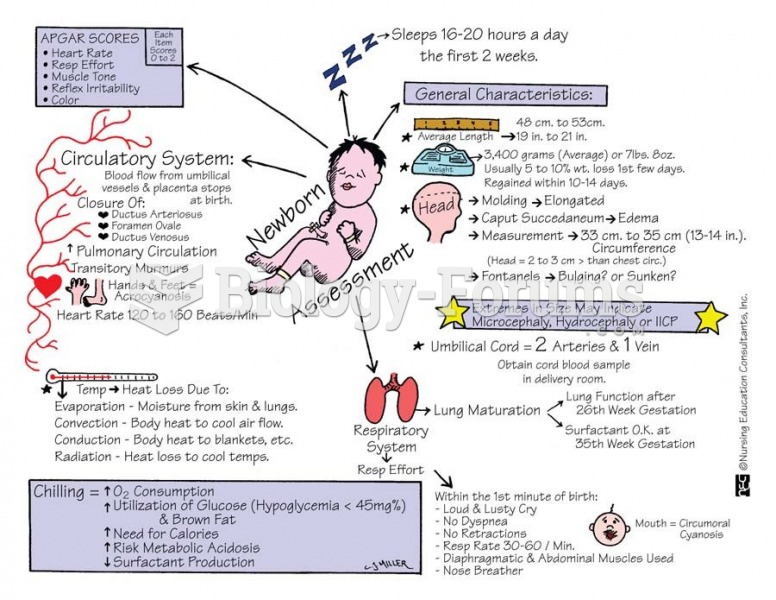This topic contains a solution. Click here to go to the answer
|
|
|
Did you know?
The calories found in one piece of cherry cheesecake could light a 60-watt light bulb for 1.5 hours.
Did you know?
The horizontal fraction bar was introduced by the Arabs.
Did you know?
Cyanide works by making the human body unable to use oxygen.
Did you know?
Approximately 25% of all reported medication errors result from some kind of name confusion.
Did you know?
Illness; diuretics; laxative abuse; hot weather; exercise; sweating; caffeine; alcoholic beverages; starvation diets; inadequate carbohydrate consumption; and diets high in protein, salt, or fiber can cause people to become dehydrated.







